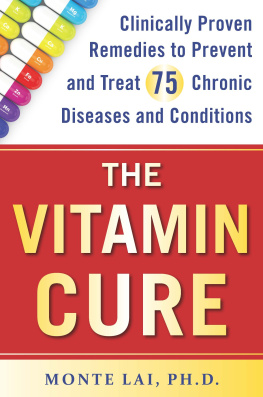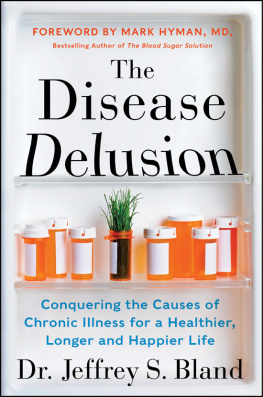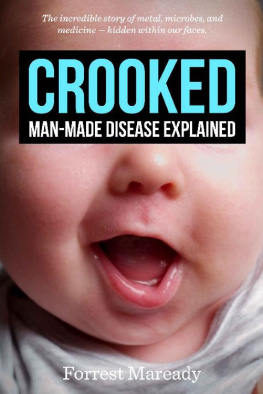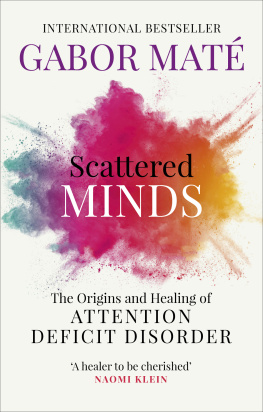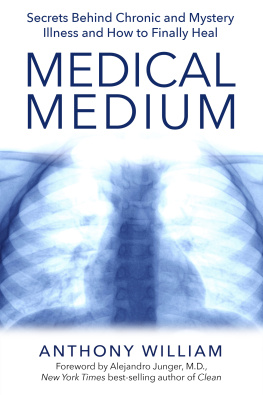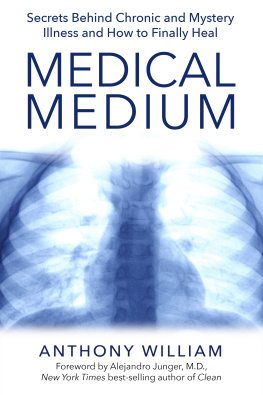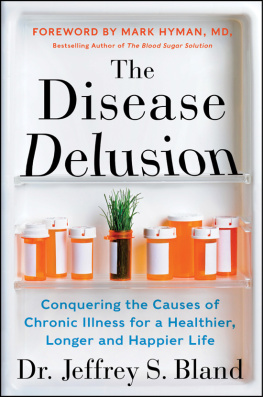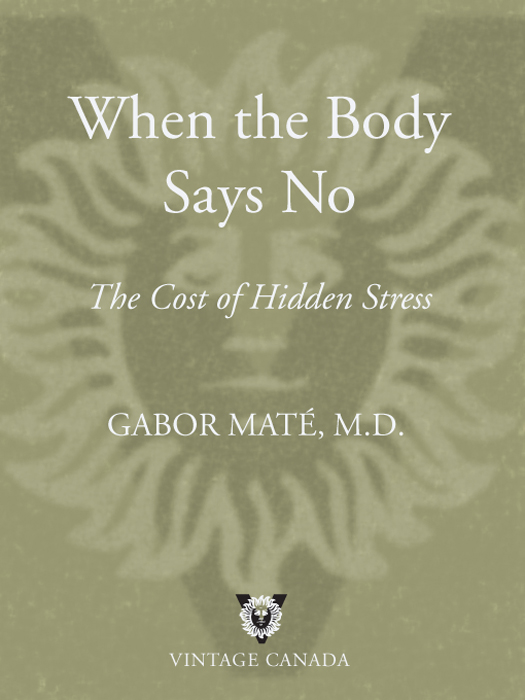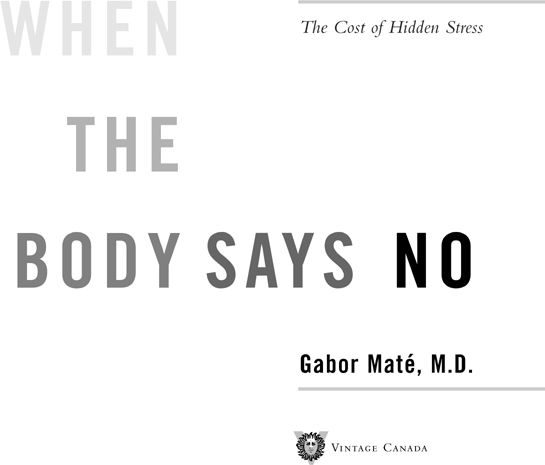HANS SELYE, M.D. , The Stress of Life
Contents
13 Self or Non-Self: The Immune
System Confused
14 A Fine Balance: The Biology
of Relationships
19
A Note to the Reader
P EOPLE HAVE ALWAYS UNDERSTOOD INTUITIVELY that mind and body are not separable. Modernity has brought with it an unfortunate dissociation, a split between what we know with our whole being and what our thinking mind accepts as truth. Of these two kinds of knowledge the latter, narrower, kind most often wins out, to our loss.
It is a pleasure and a privilege, therefore, to bring in front of the reader the findings of modern science that reaffirm the intuitions of age-old wisdom. That was my primary goal in writing this book. My other purpose was to hold up a mirror to our stress-driven society so that we may recognize how, in myriad unconscious ways, we help generate the illnesses that plague us.
This is not a book of prescriptions, but I do hope it will serve its readers as a catalyst for personal transformation. Prescriptions come from the outside, transformation occurs within. There are many books of simple prescriptions of one sort or anotherphysical, emotional, spiritualthat appear each year. It was not my intention to write yet one more. Prescriptions assume that something needs to be fixed; transformation brings forth the healingthe coming to integrity, to wholenessof what is already there. While advice and prescriptions may be useful, even more valuable to us is insight into ourselves and the workings of our minds and bodies. Insight, when inspired by the quest for truth, can promote transformation. For those seeking a healing message here, that message begins on page one with the very first case study. As the great physiologist Walter Cannon suggested, there is a wisdom in our bodies. I hope When the Body Says No will help people align with the inner wisdom we all possess.
Some of the case examples in this book are derived from published biographies or autobiographies of well-known persons. The majority are taken from my clinical experience or from taped discussions with people who agreed to be interviewed and quoted regarding their medical and personal histories. For privacy reasons, names (and, in some instances, other circumstances) have been changed.
To avoid making this work prohibitively academic for the lay reader, notes have been used only sparingly. References are provided for each chapter at the end of the book.
Italics, unless otherwise noted, are mine.
I welcome comments at my e-mail address: .
1
The Bermuda Triangle
M ARY WAS A NATIVE WOMAN in her early forties, slight of stature, gentle and deferential in manner. She had been my patient for eight years, along with her husband and three children. There was a shyness in her smile, a touch of self-deprecation. She laughed easily. When her ever-youthful face brightened, it was impossible not to respond in kind. My heart still warmsand constricts with sorrowwhen I think of Mary.
Mary and I had never talked much until the illness that was to take her life gave its first signals. The beginning seemed innocent enough: a sewing-needle puncture wound on a fingertip failed over several months to heal. The problem was traced to Raynauds phenomenon, in which the small arteries supplying the fingers are narrowed, depriving the tissues of oxygen. Gangrene can set in, and unfortunately this was the case for Mary. Despite several hospitalizations and surgical procedures, she was within a year begging for an amputation to rid her of the throbbing ache in her finger. By the time she got her wish the disease was rampant, and powerful narcotics were inadequate in the face of her constant pain.
Raynauds can occur independently or in the wake of other disorders. Smokers are at greater risk, and Mary had been a heavy smoker since her teenage years. I hoped that if she quit, normal blood flow might return to her fingers. After many relapses she finally succeeded. Unfortunately, the Raynauds proved to be the harbinger of something far worse: Mary was diagnosed with scleroderma, one of the autoimmune diseases, which include rheumatoid arthritis, ulcerative colitis, systemic lupus erythematosus (SLE) and many other conditions that are not always recognized to be autoimmune in origin, such as diabetes, multiple sclerosis and possibly even Alzheimers disease. Common to them all is an attack by ones own immune system against the body, causing damage to joints, connective tissue or to almost any organ, whether it be the eyes, the nerves, the skin, the intestines, the liver or the brain. In scleroderma (from the Greek word meaning hardened skin), the immune systems suicidal assault results in a stiffening of the skin, esophagus, heart and tissues in the lungs and elsewhere.
What creates this civil war inside the body?
Medical textbooks take an exclusively biological view. In a few isolated cases, toxins are mentioned as causative factors, but for the most part a genetic predisposition is assumed to be largely responsible. Medical practice reflects this narrowly physical mindset. Neither the specialists nor I as her family doctor had ever thought to consider what in Marys particular experiences might also have contributed to her illness. None of us expressed curiosity about her psychological state before the onset of the disease, or how this influenced its course and final outcome. We simply treated each of her physical symptoms as they presented themselves: medications for inflammation and pain, operations to remove gangrenous tissue and to improve blood supply, physiotherapy to restore mobility.
One day, almost on a whim, in response to a whisper of intuition that she needed to be heard, I invited Mary to make an hour-long appointment so that she would have the opportunity to tell me something about herself and her life. When she began to talk, it was a revelation. Beneath her meek and diffident manner was a vast store of repressed emotion. Mary had been abused as a child, abandoned and shuttled from one foster home to another. She recalled huddling in the attic at the age of seven, cradling her younger sisters in her arms, while her drunken foster parents fought and yelled below. I was so scared all the time, she said, but as a seven-year-old I had to protect my sisters. And no one protected me. She had never revealed these traumas before, not even to her husband of twenty years. She had learned not to express her feelings about anything to anyone, including herself. To be self-expressive, vulnerable and questioning in her childhood would have put her at risk. Her security lay in considering other peoples feelings, never her own. She was trapped in the role forced on her as a child, unaware that she herself had the right to be taken care of, to be listened to, to be thought worthy of attention.
Mary described herself as being incapable of saying no, compulsively taking responsibility for the needs of others. Her major concern continued to be her husband and her nearly adult children, even as her illness became more grave. Was the scleroderma her bodys way of finally rejecting this all-encompassing dutifulness?


